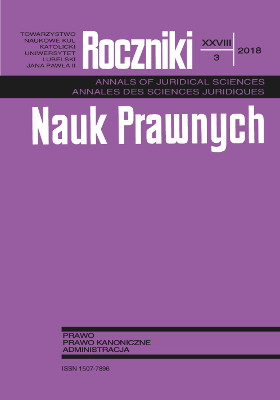Pojęcie relikwii oraz kanoniczne rozpoznanie, przeniesienie i konserwacja doczesnych szczątek sług Bożych według instrukcji Kongregacji Spraw Kanonizacyjnych z 8 grudnia 2017 roku
The Concept of Relics And Canonical Recognition, Transfer and Preservation of the Mortal Remains of Servantof God According to the Instruction of the Congregation for the Causes of Saints on December 8, 2017
Author(s): Lidia Fiejdasz-BuczekSubject(s): Law, Constitution, Jurisprudence, Canon Law / Church Law
Published by: Towarzystwo Naukowe KUL & Katolicki Uniwersytet Lubelski Jana Pawła II
Keywords: beatification process; canonization law; postulator; significant relics; non-significant relics; Pope Francis; cult of the relic
Summary/Abstract: For the first time since the reform of canon law in 1983 the terminology regarding relics was put in the official document of the Holy See. The Instruction distinguishes between significant and non-significant relics. Referring to the decrees of the Sacred Congregation of Rites, it shows the reasons why this particular division was rightly introduced. The Bishop of the diocese or of the eparchy where mortal remains are preserved is competent to perform all the possible procedures on them, provided he has obtained beforehand the consent of the heirs and the consent of the Congregation for the Causes of Saints (different variants are possible). Apart from a Tribunal the Bishop nominates expert pathologists, people charged with performing the technical aspects of the works and two witnesses. The procedures of canonical recognition of the remains, the extraction of some fragments in case of imminent beatification and some final operations are discussed.
Journal: Roczniki Nauk Prawnych
- Issue Year: 28/2018
- Issue No: 3
- Page Range: 193-207
- Page Count: 15
- Language: Polish

